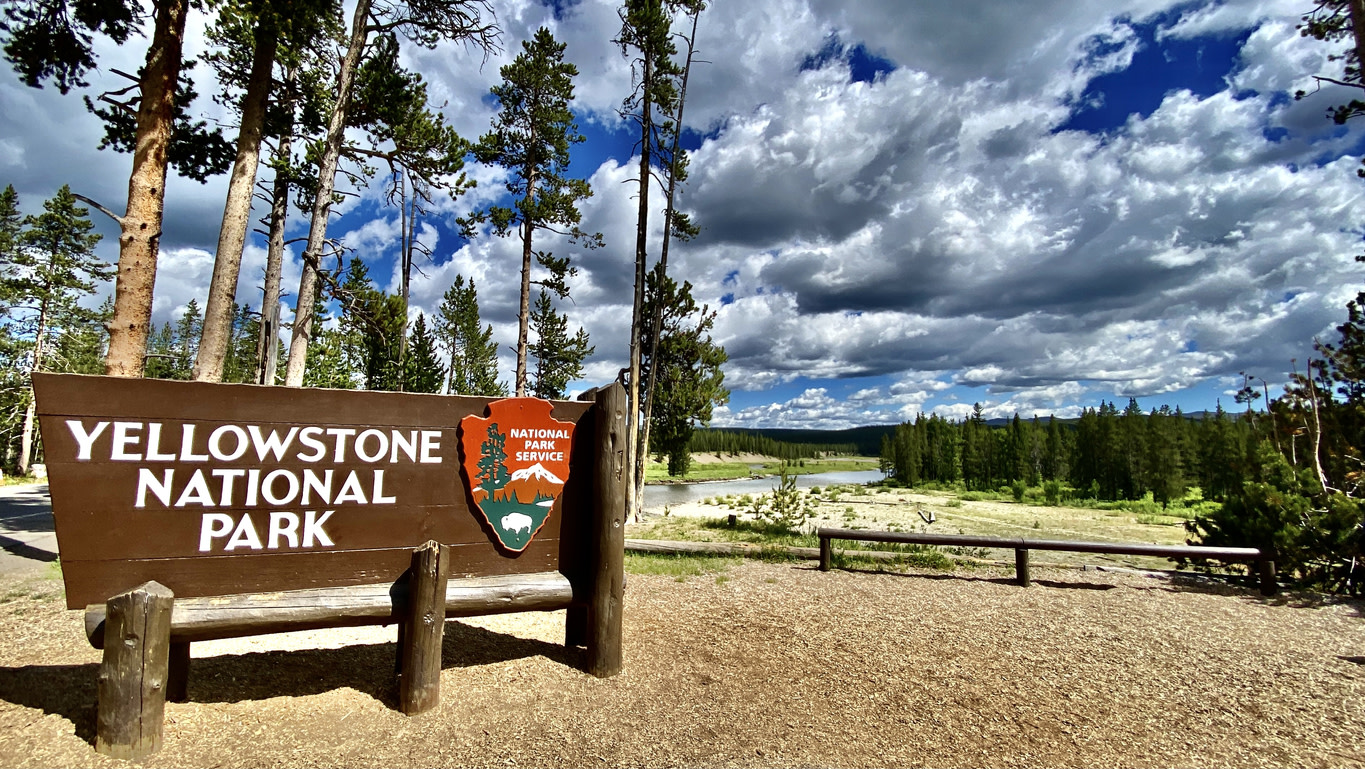Whether it's a symptom of the times or something that's now being exposed by the ubiquity of social media, it's disturbing and frustrating all the same.
Another incident of bad behavior at a national park sparked outrage recently on Instagram, as a woman stood within reach of a prone bison on the side of a road and a few others swarmed mere feet away.
The two photos — the first of which captured a nearby sign reading "DANGER: DO NOT APPROACH WILDLIFE" — credited another user:
"She was probably a foot or 2 [from the animal and] was about to pet him and a ranger started yelling at her from the road! This was across from old faithful gas station and someone has just been charged by the same animal," the user who took the pictures wrote for the caption. "ambulance and rangers were just across the street from this disaster in waiting!"
There are so many people who endanger themselves and others with this kind of bad behavior that there's an Instagram page dedicated to exposing them: Tourons of Yellowstone. The portmanteau is a play on the words "tourists" and "morons."
"The sign saying do not approach wildlife. This is not only irresponsible, this is highly disrespectful," one user commented. "There should be fines for careless behavior like this."
Another said: "Unbelievable. Lifetime ban of all national parks. Need to enforce $10,000 fine and/or 6 months in jail for failing to follow the park rules. Period."
Like all wildlife, bison can be unpredictable. They can charge at a moment's notice, and sometimes even a car doesn't provide enough protection.
Visitors are advised to stay at least 25 yards away. The animals can become agitated more quickly during their mating season, from mid-July to mid-August.
They run three times faster than humans and have injured more people than any other animal at Yellowstone.
"Approaching bison threatens them," according to the National Park Service, "and they may respond by bluff charging, head bobbing, pawing, bellowing, or snorting. These are warning signs that you are too close and that a charge is imminent."
"Do not stand your ground. Immediately walk or run away from the animal. Spray bear spray as you are moving away if the animal follows you."
The hazards of Yellowstone are well documented, from such dangerous wildlife to boiling hot springs, which have injured or killed more people than any other natural feature in the park. Visitors should never approach animals, stay on boardwalks at all times, and refrain from feeding the fauna.
Sometimes animal sightings can create traffic jams, and guests should stay with their cars in those cases.
Yellowstone, which is mostly in Wyoming but also is in parts of Montana and Idaho, is the only place in the United States where bison have lived since prehistoric times, according to the Department of the Interior. The park's population of some 5,450 bison in 2021 marks the largest on public land.
There are about 10,000 bison on public lands across 17 herds in 12 states, accounting for one-third of the continent's wild population.
The mammals, the largest in North America, can weigh up to 2,000 pounds and stand 6 feet tall.
All the more reason to let them be.
"I honestly feel awful the Park Rangers have to deal with this," one user wrote. "I thought keeping kindergartners in line was tough. But TOURONS."
Another noted: "These people are going to mess the Yellowstone experience up for those of us that have half a brain and common sense!!"
Join our free newsletter for cool news and cool tips that make it easy to help yourself while helping the planet.









